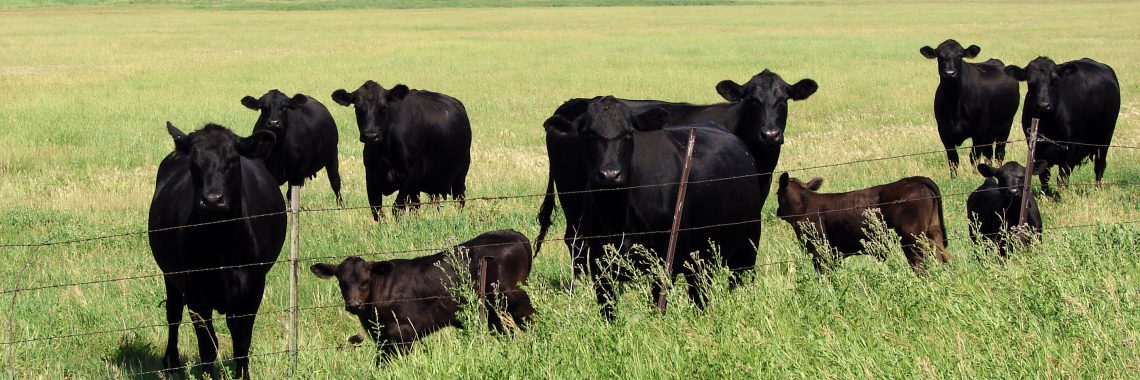A livestock herd’s profitability depends on the ability of a mother animal, cows in this case, to breed up, carry a calf to term, successfully provide for the calf, and breed back up again the next year.
Long-term research at Oklahoma State University and Texas A&M AgriLife over 15 years declared that, for your investment in a cow, most will successfully deliver 5.7 to 6 calves in their lifetime. We hope ours is a bit better than that in Wyoming, but drought conditions do not help at all.
Two crucial nutritional periods
Effective nutrition for a cow is essential to maximizing lifetime and annual production. Research at the University of Nebraska, University of Wyoming and Colorado State University analyzing numerous range cattle herds over 10-12 years shows two crucial periods exist in the nutritional plane.
The first is the last trimester of gestation when a cow is providing huge amounts of energy to the developing fetus. Up to 75 percent of fetal growth occurs in the final trimester of gestation. During this period, research has shown effective nutrition that allows the cow to be on an increasing level of body condition provides programming to the unborn fetus (calf) to effectively use feed and gain weight more than calves from cows who were on a static or decreasing plane of nutrition.
This directly translates to calves yielding 45-55 more pounds on the same nutrition at weaning time.
The first trimester of lactation when demand on the cow is high is the second crucial nutritional period. The start of a calf and the readiness of a cow for rebreeding is based on body condition to a certain degree. Cows may miss the first breeding cycle or not take at all if in a low or decreasing nutritional plane. When thin cows fall out of the 365-day calving cycle, they are likely costing money instead of making money.
Amounts, nutrition types
Let’s look at an average frame cow, say 1,323 pounds. She is going to need a minimum of 19.6 pounds of dry matter intake each day when she is in the last trimester of gestation. It should include 1.16 pounds of protein, 16.1 Metabolizable Energy (ME) megacalories (mcals) of energy (more about this), 9.8 pounds of Total Digestible Nutrient (TDN) and 0.33 pounds of both calcium and phosphorus as well as vitamins.
Once she delivers and starts producing milk, the same cow will need about 20.3 pounds of dry matter intake, 1.2 pounds of protein, 17.5 ME Mcals of energy, 10.6 pounds of TDN, 0.37 pounds of calcium and phosphorus as well as suitable vitamins. Cattle as ruminants take in nutrients via their own metabolism and by feeding bacteria which, if healthy, then also break down the less digestible dry matter consumed on rangelands.
Normally, the nutrient values available in spring pastures provide suitable energy and nutrients to allow few worries during the first three months of lactation. And it is well recognized supplements can help calves grow and cows breed up. So we normally worry about serious supplementation for needs during the fall and winter, including the last trimester of gestation.
Drought changes requirements
But during droughts, the landscape can change quickly. The amount of available dry matter can be reduced 30-60 percent. The protein levels of range grasses that normally hover at 9-14 percent during many springs have been documented to drop to 3-5 percent when over 40 sites were monitored in 2006, 2012, and 2014 across western Nebraska and eastern Wyoming. Energy levels, which are directly tied to fetal programming and reproduction physiology, can drop by as much as 81 percent, according to several studies.
On top of all of those issues, when grasshoppers and wildfire are competing for the sparse grass resources, cattle slow their dry matter Intake and metabolism, including their rate of passage when resources are low quality or low availability. Producers are faced with finding other good quality forage, providing expensive supplements, or considering thinning.
This is a time when many producers start looking for inexpensive alternative feeds, and the livestock begin to get less picky about forages. Animals tend to have more toxic plant poisonings during droughts due to reduced selectivity.
If facing drought conditions, monitor the body condition score of your herd (we can teach you how) and bounce creative feed sources past your extension educator or other knowledgeable resource. Some alternative feeds may have issues, and some supplements may provide more protein but not enough energy. Know your area so you do not pay for unneeded or harmful additives, like selenium.
Nutritional needs vary with individual cattle weights, production cycle, resource values, and operational guidelines. Remember, a slightly gaining cow drops a happy gaining calf and breeds back quicker.
Authors: Scott Cotton is an area extension educator for agriculture in central Wyoming, and Chance Marshall is an area extension educator for the northwest region. Cotton can be reached at Scotton1@uwyo.edu or (307)235-9400, and Marshall can be reached at cmarsha1@uwyo.edu or (307) 332-2363.





